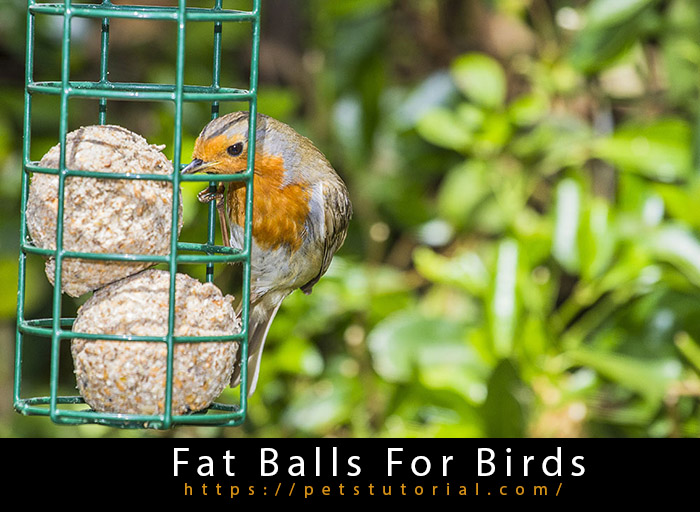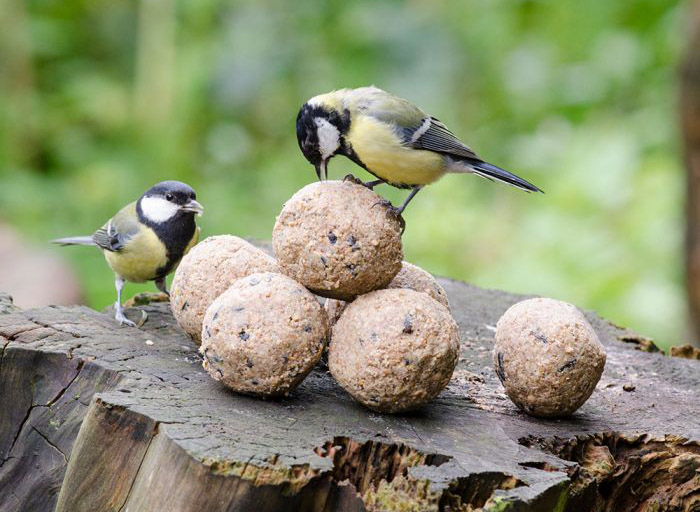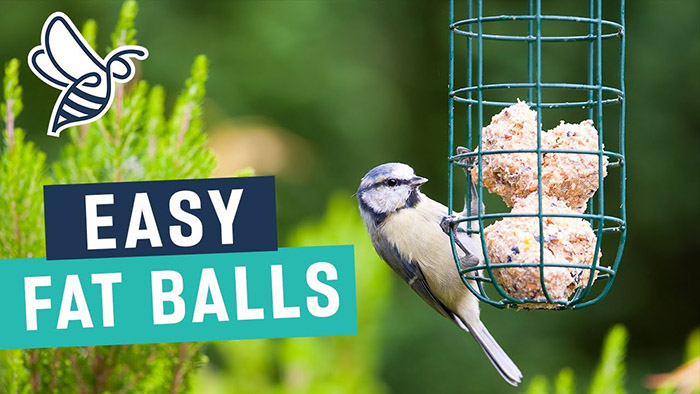Suet, a popular ingredient in bird feeders, is often formed into balls and combined with other ingredients to attract a wide variety of birds.
Fat balls for birds are a treat made of rendered, cooked-down beef fat and dry materials like oats or wheat that stiffen in the refrigerator. When mixed with other, more desirable bird food, like seed mixtures, nut meat, and insects, fat balls, which are fed to wild birds more frequently in the winter, form suet.
You are reading: Fat Balls For Birds

Fat balls, also known as suet balls, are a high-fat food source for the birds in our yard. They are made of beef fat and are meant to replenish the birds’ energy stores during the colder months when they are unable to find their natural food sources.
Since suet is a fat and can melt in the heat of the sun, it is more common to use fat balls in the winter, when feeding birds suet is more important, and less so in the summer.
However, although rendered cattle fat, such as lard, is perfectly acceptable for backyard birds, vegetable oil is not.
To form the meatballs, beef fat is combined with wheat or oats to make a drier combination. Seeds, nuts, insects, and dried fruits can be added after this step, or any combination thereof.
Fat balls can contain a wide variety of components to meet the dietary needs of as many bird species as feasible, as long as those ingredients are similar to what the birds eat in the wild.
You may buy fat balls in 50-count containers or in a green plastic netting that isn’t exactly eco-friendly.
The best place to hang suet is in a bird feeder, where the hard suet balls may be pecked at by birds through the gaps in the metal cage.
Fat balls are rendered beef fat
Fat balls are a type of bird food made by compressing rendered beef fat into a mold with other dry ingredients.
When beef fat is rendered, the fat is boiled down to remove impurities, leaving a fluid, white, thick fat mixture that will eventually harden but must remain soft at first to be formed into fat balls.
Since it may be challenging to entice birds to eat exclusively fat using fat balls made from beef fat, this method introduces essential components to the diet of wild birds.
Still liquid, beef fat can be combined with two parts dry ingredients like wheat or oats to make a meal. Next, form the fat into balls and place them on a grease-proof tray before chilling in the fridge.
Fat balls are often made using beef fat and, once other ingredients are added, might be renamed suet balls or fat ball suet.
Fat balls for wild birds are just beef fat that has been rolled up, cooked down, and left to harden; the addition of dry ingredients is required for the fat to retain its shape while being rolled.
Balls rolled in dry ingredients

You’re pretty much stuck with making fat balls out of drained beef fat, and beef fat that runs when it’s melted is dangerous for birds because it gets trapped in their feathers and tangles them up as they eat.
Time in the fridge is required for rendered beef fat to solidify, but not before several bird-safe mixes are added.
The rendered beef fat is combined with a playable mixture, such as dried oats or wheat, making it similar to Plasticine or Play-Doh.
Fat balls are made by rolling suet in the palm of your hand, just like garlic balls or other similar pastry delicacies, with the caveat that they may end up in a fat ball suet bird feeder, in which case they’ll need to be consistently smaller.
To produce round balls out of the rendered beef fat, you mix one part of the liquid fat with two parts of oats or wheat flour until the mixture is dry enough to shape.
Fat balls mixed with bird favorites
Common backyard birds of all species will eat fat balls made with only wheat or oats, but you’ll get better results by including other, more desirable ingredients.
You can buy or manufacture suet with bird food ingredients that are part of the diet of the birds that visit your yard, such as Woodpeckers, Sparrows, or Cardinals.
Seed mixtures, nut meat, millet, cracked maize, and maybe sunflower seeds are the primary ingredients of fat balls for wild birds.
Keep in mind that all of this, as well as the oats and/or wheat used to produce the fat balls, would be included.
You can buy suet fat balls designed to attract specific bird species based on their dietary requirements, allowing you to provide a nutritious meal to a wide variety of avian visitors. However, most birds will eat fat balls made from almost anything.
You can get suet balls that are loaded with nuts, dried fruit fats, mealworms, or sunflower seeds.
Developed to be outdoors

Wild birds are the intended recipients of fat balls, which provide an essential source of high-energy food as the weather turns colder.
Since birds expend more energy when foraging in the winter, fat balls become increasingly important during this time of year.
These fat balls are designed for usage in the great outdoors and will endure for a long time. Depending on the temperature, the fat balls can keep for a week, but in the heat of summer, they won’t last more than a few days. If you reside in a hot and humid place like Texas, you’ll need much less time.
Read more : How To Painted Bird Feeders?
In the summer, when most birds are raising young on a diet of insects, fruits, or seed mixtures, it’s not as important to provide them with suet fat balls as it is in the winter.
In the heat, the fat in suet balls might melt and become caught in a bird’s feathers.
Be aware that packed suet fat balls, while convenient for use in the garden, have a short shelf life before becoming rancid and harboring bacteria.
Suet balls, or “fat balls,” are a staple diet for many popular backyard birds, and should be provided year-round, regardless of the weather.
Fat ball bird feeders are essential because they cover the suet from the elements and keep it at a good height, but more importantly because they keep the suet off the ground, where it will decay much more quickly.
Not only in fat ball form
Those of you who were previously unaware of what fat balls were for birds but now understand may be surprised to learn that fat balls aren’t the only type of suet available.
Suet cakes, also known as fat balls, are a popular choice for those who want to feed suet to birds in their backyard. These suet treats are manufactured in the same way as fat balls, but are instead fashioned into one-inch flat square blocks that resemble sandwiches.
These suet cakes, also known as suet blocks, can be used in a suet cake bird feeder or hung from a string.
Typically, suet cakes can be set flat on a platform feeder or other garden surface without worrying about them rolling away.
Suet pellets are the only available alternative to fat balls.
Suet pellets are little tubes made of suet that can be inserted into a suet pellet bird feeder or any other cage feeder, or even fed to birds directly on the ground.
To summarize
Fat balls for birds are made from beef fat that has been reduced down and then molded into a ball using dry ingredients before being chilled to harden.
Shapeable fat balls can be formed by combining one part rendered beef fat with two parts oats or wheat flour.
A variety of bird foods, such as seed mixtures, dried fruits, peanuts, and dried mealworms, can be rolled up into fat balls and stored in the refrigerator for later use.
If you want to attract wild birds, making fat balls out of oats or wheat alone won’t do the trick unless you also include their preferred meal.
Pet stores and the pet section of supermarkets typically have fat balls exclusively for wild birds.
You can get suet pellets, which are great for sprinkling on the ground or tossing over the platform feeder, in addition to the fat balls, suet cakes, and blocks.
Source: https://petstutorial.com
Category: Birds










